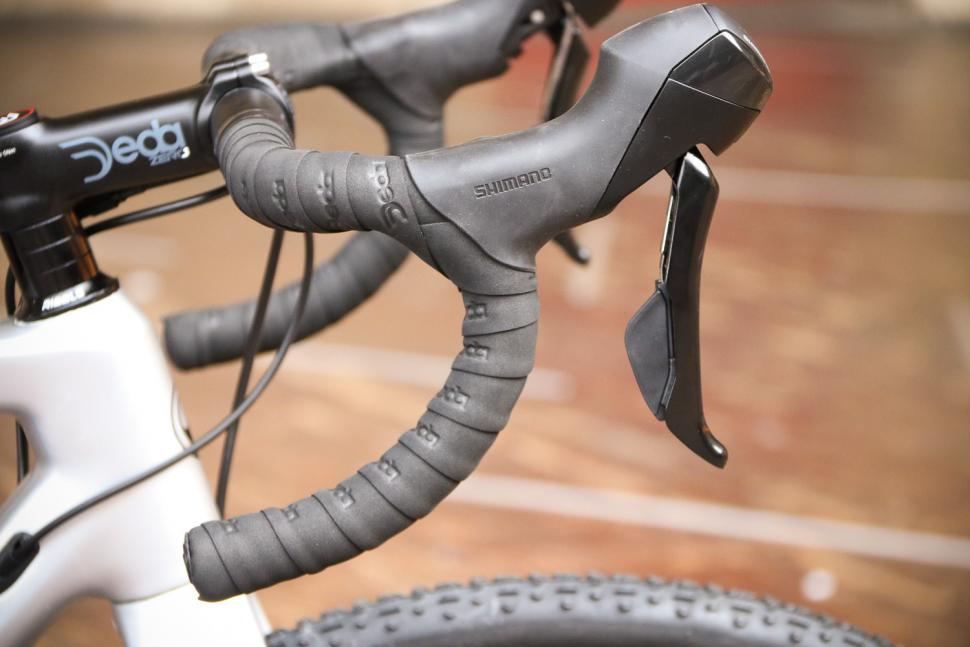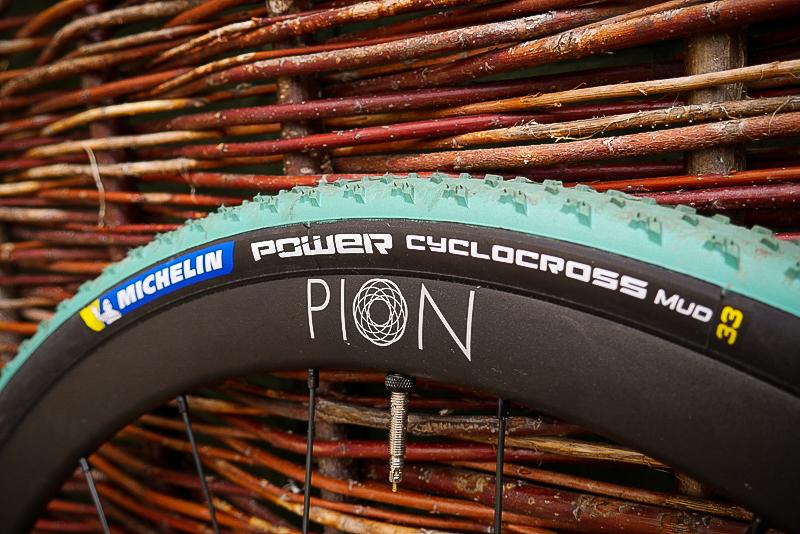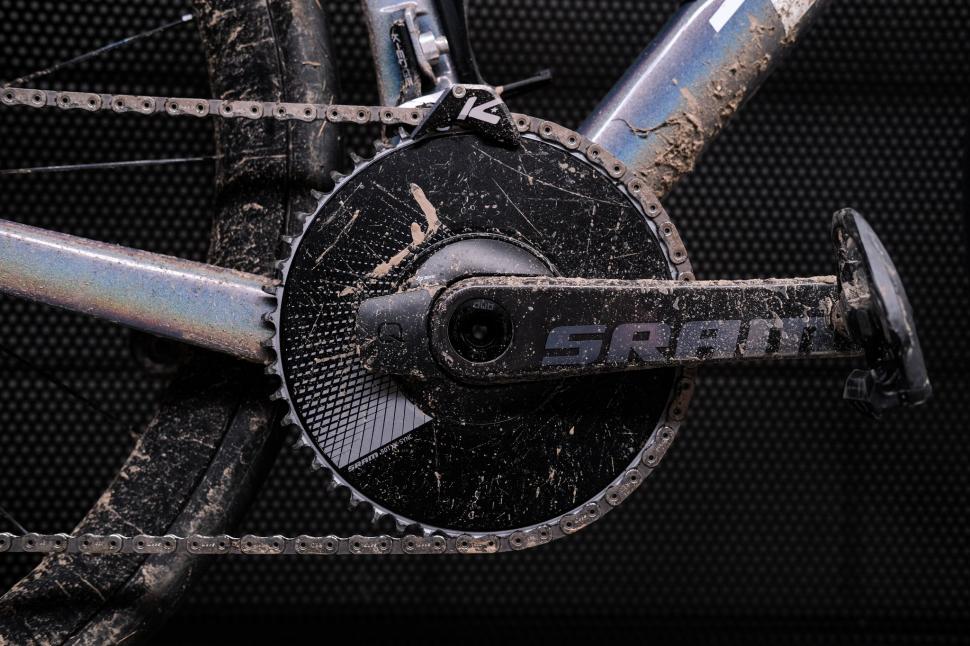- News
- Reviews
- Bikes
- Accessories
- Accessories - misc
- Computer mounts
- Bags
- Bar ends
- Bike bags & cases
- Bottle cages
- Bottles
- Cameras
- Car racks
- Child seats
- Computers
- Glasses
- GPS units
- Helmets
- Lights - front
- Lights - rear
- Lights - sets
- Locks
- Mirrors
- Mudguards
- Racks
- Pumps & CO2 inflators
- Puncture kits
- Reflectives
- Smart watches
- Stands and racks
- Trailers
- Clothing
- Components
- Bar tape & grips
- Bottom brackets
- Brake & gear cables
- Brake & STI levers
- Brake pads & spares
- Brakes
- Cassettes & freewheels
- Chains
- Chainsets & chainrings
- Derailleurs - front
- Derailleurs - rear
- Forks
- Gear levers & shifters
- Groupsets
- Handlebars & extensions
- Headsets
- Hubs
- Inner tubes
- Pedals
- Quick releases & skewers
- Saddles
- Seatposts
- Stems
- Wheels
- Tyres
- Health, fitness and nutrition
- Tools and workshop
- Miscellaneous
- Tubeless valves
- Buyers Guides
- Features
- Forum
- Recommends
- Podcast
feature
How to get your bike set up for cyclocross - the key adjustments you need to make
The road season is over and as we move towards the colder months, you might fancy giving cyclocross a go. It's one of the most accessible forms of bike racing, brilliant fun and it is also relatively safe. But what do you need to do to your new bike to get it ready to race? Here are some simple things to do.
> 6 reasons to try cyclocross this winter
Before you go out and buy a new bike (which of course is always recommended!) you might already have something that will do the job. Local cyclocross leagues are far more relaxed about what you rock up on, so if you’ve already got a gravel bike or a mountain bike, you can just grab that. This saves you investing in a whole new bike just to give cyclocross a go which is one of the reasons that ‘cross is brilliant.
But of course, we’re big fans of buying new bikes at road.cc so obviously, we’d encourage you to go out and buy a new whip to get the most out of your new hobby. Once you’ve got it home it’s time to set it up and, just like any other bike, you need to get your bum and hands in the right position.
Saddle Height
Tackling saddle height first, you simply want to replicate the height on your road or gravel bike. If you’re using different shoes and pedals, then try to account for the different stack heights of those systems.
> How to set your saddle height
You should also keep roughly the same saddle setback as you use for your road bike. The only exception would be if you’re running your saddle massively forward on your road bike. This won’t be ideal in cyclocross, because we’re looking to get your weight nicely distributed over the bike for better handling, rather than getting you super low at the front end for aero gains.
Bar position
For your bars, start with your road position or as close as you can get, because you’ll already be comfortable in that. Where changes need to be made is if you usually run your bars low, because while one of the key elements of road racing is pushing the air out of the way, for cyclocross it's all about staying upright. Handling is the focus, so a good rule is to position your cyclocross bars about 1-2cm higher than on your road bike, and move them about a centimetre closer to you.
> 12 of the best cyclocross bikes
The taller and shorter riding position just makes it easier to deal with technical terrain, be that rough surfaces or tight corners, but there's also a second benefit. As you start slogging your way through a muddy field, this position will also be a fair bit kinder on your back.
Lever position
While we’re up at the front end, consider the position of your levers. Tucking them right down like a lot of road racers isn't advisable, because control on difficult terrain can be lost. Instead, move them the other way slightly. This might take a little bit of trial and error, but you should eventually find what is comfortable for you.
> 4 ways to get better at cyclocross
Tyre choice
Once you’re comfortable on your cyclocross bike, it’s time to dive into tyre choice. The right rubber is key to getting traction, so I’d really encourage you to consider a tyre upgrade if the ones that came on your bike aren’t up to the job. There are several tread patterns out there, but they generally break down into three categories.
First are the dry tyres. These will have a file tread in the centre and maybe some very short shoulder knobs. They’re great for sandy courses too.
Then we have intermediate tyres. These will be covered with a low-profile tread and often, this is what manufacturers will plump for when selecting the stock tyres. You can easily run these throughout a season of racing, just get ready to let your tyre pressure down a lot when it gets muddy, but more on that in a min.
Finally, we’ve got mud tyres. These have tall, widely spaced knobs to bite into the mud and then clear quickly. That comes at the cost of straight-line speed though.
A wise choice would be to have a mud tyre up front for cornering grip, then use an intermediate on the rear. You generally have a better chance of saving a rear-end slide than if your front wheel goes, so if you want to save some rolling resistance, do it on the rear wheel.
You can run inner tubes if you like, but tubeless really makes sense in cyclocross as it significantly reduces the risk of punctures at low pressures, and running low pressures is what is going to give us that precious grip.
> Learn how to fit tubeless tyres here
Cyclocross seems to be the last frontier for tubular tyres, and keen racers will generally use them once they start to take racing seriously. A tubular is stitched closed around an inner tube, then glued onto a tubular-specific rim. The advantages are that you can run the lowest pressures without the risk of the tyre coming off. They generally behave the best when cornering too, but we’re getting a bit too deep into the details there. If you’re just starting out, then tubeless is what we’d suggest!
> Review: Michelin Power Cyclocross Jet Tyre
And that leads us nicely onto tyre pressure. Even a mud tyre will struggle to grip if you put too much air in, so getting this right is crucial. Thankfully, there is a formula to get you in the ballpark when picking your perfect pressure.
First, you’ll need your weight in pounds. Divide it by 10, then add 5 if you’re using tubulars, 10 for tubeless or 20 for clinchers. For the star of our video Liam, at 139lbs and using tubeless, that means his starting point is about 24 psi.
The conditions that you’re riding in can influence this too. In very muddy conditions where there are very few roots and rocks, you could drop the pressure by around 5psi. For rough or dry conditions, you want to protect the rims from impacts, so adding 5 psi to the original value is advisable.
You can also consider the different loads that the two wheels are taking, and add a little to the rear to compensate for the added load bearing it does.
Clean your drivetrain
To achieve the best results at your 'cross events, you want to be keeping your drivetrain squeaky clean. Contrary to what you might expect for this discipline, which usually happens in the muck, it's also a good idea to use the lightest chain lube possible. It’s not just for looks this time either, as heavy winter chain lubes, or wet lubes, do a brilliant job of protecting your chain, but they also do a great job of collecting dirt. Over the course of a muddy ride or race, this can build up and eventually, your chain could start to misbehave.
> How to clean your bike - from a quick lick to a full makeover
Start with a fully stripped chain, cassette and chainrings. Remove the chain if it is still coated in packing grease and treat it to a bath in white spirit. Rinse, dry and then reinstall before applying a light coat of an extra light lube or chain wax. Wipe off any excess and then leave to dry before you ride.
While it might sound like a faff to wash and re-lube each time, it's worth it for gears that are working perfectly for the duration of your race.
Are you getting ready for 'cross season? Show us your bike and let us know how you're finding it so far in the comments below!
Latest Comments
- wtjs 11 min 40 sec ago
Does nobody sport a sense of humour any more? You can tell this is a jokey festive spoof from: I did suggest that you take note of the number...
- Surreyrider 22 min 8 sec ago
Every review is, by definition, biased. Including yours above. Reading it, I would guess you're either a Ribble owner or employee.
- hawkinspeter 23 min 1 sec ago
Here's a typical example of the state of the BBC's motornormative reporting: https://www.bbc.co.uk/news/articles/c1d377rylkqo...
- hawkinspeter 38 min 38 sec ago
I don't accept that the coroner was issuing general safety advice as they're not in any way qualified to do so. Do they issue dietary advice after...
- james-o 40 min 55 sec ago
that was my Q about the line "those very same carbon monoxide rebreathers also allow for precise dosing of the gas into the lungs, which could...
- kinderje 1 hour 31 min ago
Thank you, someone else who thinks it's yellow and not green And I agree that it doesn't look particularlt exciting either.
- LookAhead 11 hours 8 min ago
Spot on, Kask's chin strap is faux leather (contra the review's claim that it's real leather) and excellent, by far the best I've used. It's snug...
- David9694 12 hours 26 min ago
Live: Audi crashes on to its roof in Honiton town centre https://www.devonlive.com/news/devon-news/live-audi-crashes-roof-honiton...
- wtjs 12 hours 41 min ago
There is now a development of uncertain veracity on this Nissan, with a photo somebody has sent me suggesting it's stolen....







Add new comment
7 comments
I still don't understand the emphasis on ridiculously low pressures for grip, as I find that once you get too low, they just squirm around on cornering and that negatively affects the overall handling too much.
I prefer to run them harder, on the theory that they'll dig through the mud to find the harder layer underneath, giving better grip and traction.
I found that they shed mud better at lower pressure, the greater deformation helps dislodge it rather than effectively becoming a slick at higher pressure.
Ask Moscon about tyre pressures for Paris Roubaix
I'd ask the Ineos mechanic who pumped the tyres up.
I know that some some very good cyclo-cross riders that used to run tubulars at 15-20 psi in muddy or snowy conditions.
"Helen uses a simple formula for setting the pressure. Take your weight in lbs, mine is 144. Divide it by 10 and this is your lowest pressure in a tubular. For me, that's 14.4psi. Adding 10psi to that gives you your max tyre pressure, 24.4psi for me. If you're using tubeless or clincher tyres, you'll need to add 5-10 psi to those figures to avoid burping or pinch punctures respectively."
https://road.cc/content/news/220218-helen-wyman-interview-cyclocross-tra...
I'd expect the recent dry weather for the early season races means that most riders would use considerably higher pressures.
If you're running a MTB in a local league or club event then the ca. 2" tyres provide a significant grip advantage over 32mm CX treads and will handle roots and rocks better, with or without suspension.
But if you want to do it well then the main thing to sort for cyclo-cross is your fitness.
They do feel weird to me to begin with, but once I get used to riding low pressures on mud, they feel great and the grip and cushioning is unmatched IMO
What a good video. I particularly like the race footage
Thanks Miller